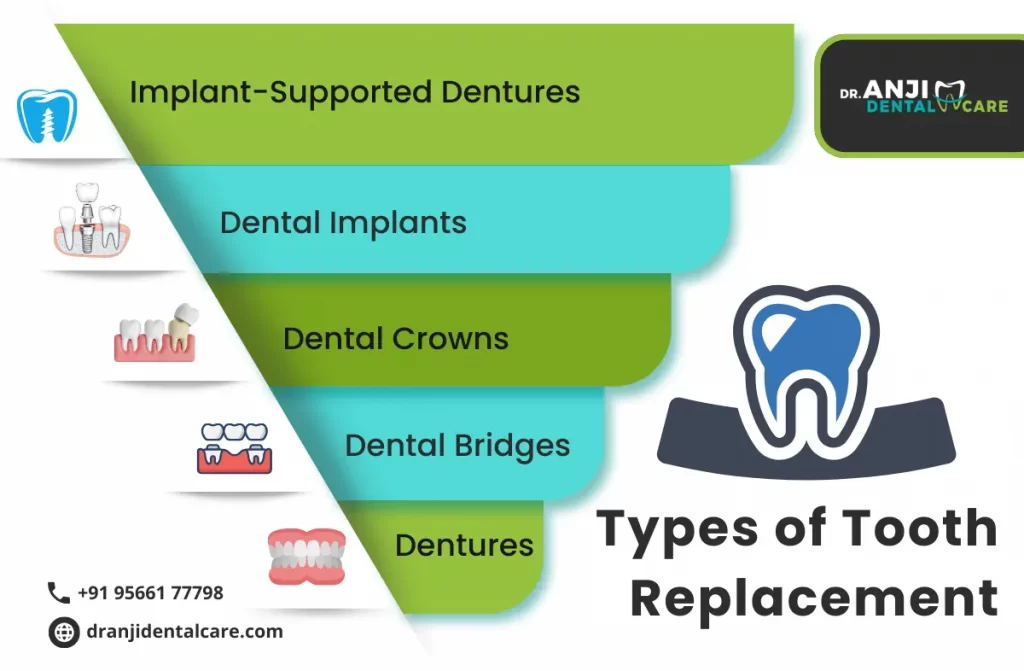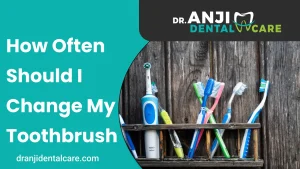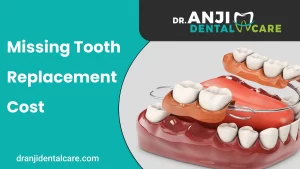A bright, confident smile can be a game-changer in both our personal and professional lives. However, missing teeth can be a source of discomfort and insecurity for many. If you’ve ever wondered about the cost of replacing missing teeth and the permanent teeth replacement options, you’re not alone. In this comprehensive guide, we will explore the various missing tooth replacement options and their associated costs. We’ll also delve into the factors that affect the missing tooth replacement cost and discuss the best permanent teeth replacement choices available.

Understanding the Missing Tooth Replacement Cost
When it comes to addressing the issue of missing teeth, cost is a significant factor for most individuals. The cost of replacing a missing tooth can vary widely based on several factors. Let’s break down the elements that influence the missing tooth replacement cost:
Location
One of the most prominent factors affecting the cost of missing tooth replacement is your geographic location. Dental costs can vary significantly from one region to another. For instance, dental procedures in metropolitan areas often come with a higher price tag compared to smaller towns and rural areas. It’s essential to research local dental costs to get a better idea of what you can expect in your area.
Type of Replacement Option
The choice of replacement option plays a substantial role in determining the overall cost. There are several alternatives available for replacing missing teeth, each with its own price point. Some common options include:
- Dental Implants
- Dental Bridges
- Partial Dentures
- Full Dentures
Each of these options varies in cost, durability, and aesthetic appeal. Let’s explore each one and the associated costs:
Dental Implants: A Premium Choice
Dental implants are often considered the gold standard in missing tooth replacement due to their durability and natural appearance. These artificial tooth roots are surgically placed into the jawbone, providing a sturdy foundation for crowns or bridges. While dental implants offer a long-term solution, they tend to have a higher initial missing tooth replacement cost.
Dental implant costs can range from $1,000 to $3,000 per tooth, depending on factors like location and complexity. Keep in mind that this cost might not include the price of the restoration, which can add another $1,000 to $2,000 per tooth.
Dental Bridges: A Traditional Option
Dental bridges are a more budget-friendly solution for replacing missing teeth. They consist of one or more artificial teeth anchored to adjacent natural teeth or dental implants. The missing tooth replacement cost for dental bridges can range from $500 to $1,200 per tooth. However, it’s essential to note that bridges may not last as long as dental implants and might require replacement after a certain period.
Partial and Full Dentures: Affordable Alternatives
Partial dentures are used when only a few teeth are missing, while full dentures are suitable for replacing an entire arch of teeth. These removable prosthetic devices are generally more affordable compared to dental implants and bridges.
The missing tooth replacement cost for partial dentures can range from $300 to $800, while full dentures may cost between $600 and $1,500. It’s important to remember that dentures can be less stable and may require regular maintenance or replacement.
Additional Procedures
In some cases, additional procedures may be necessary, increasing the overall missing tooth replacement cost. These procedures can include bone grafts, sinus lifts, or tooth extractions, depending on the individual’s oral health and the chosen replacement option. These supplementary procedures can add hundreds to thousands of dollars to the total cost.
Best Permanent Teeth Replacement Options
Now that we have a better understanding of the missing tooth replacement cost, let’s explore the permanent teeth replacement options in more detail:
Dental Implants: The Gold Standard
As previously mentioned, dental implants are often considered the permanent teeth replacement option due to their durability, natural appearance, and long-lasting results. They fuse with the jawbone, providing a stable foundation for the replacement tooth or teeth. Dental implants can last a lifetime if properly cared for, making them a wise investment in your oral health.
Dental Bridges: A Reliable Choice
Dental bridges are a dependable option for permanent teeth replacement, especially when dental implants are not suitable or cost-prohibitive. They offer stability and aesthetic appeal while restoring your ability to eat and speak comfortably. Bridges can be a long-lasting solution when well-maintained and may last 10-15 years or more.
All-on-4 Dental Implants: A Hybrid Solution
For individuals missing multiple teeth or a full arch of teeth, All-on-4 dental implants offer a hybrid solution that combines the stability of dental implants with the convenience of a full arch prosthesis. This option can be more cost-effective compared to replacing each tooth individually with separate implants.
Conclusion
The cost of smiles, in the form of missing tooth replacement, is a significant concern for many. Understanding the factors that influence the missing tooth replacement cost and exploring the best permanent teeth replacement options is essential in making an informed decision about your oral health.





